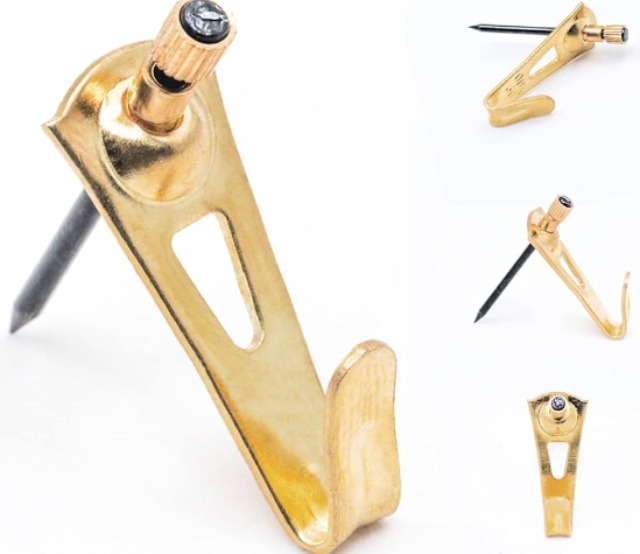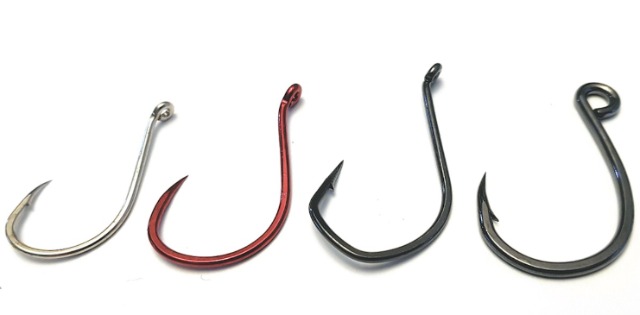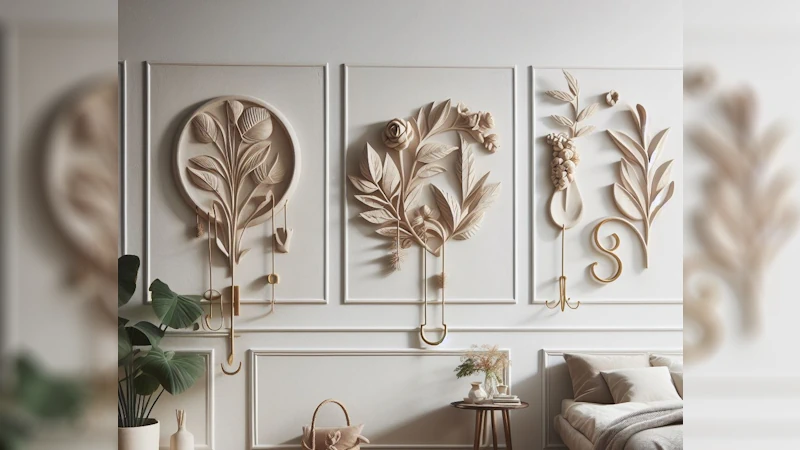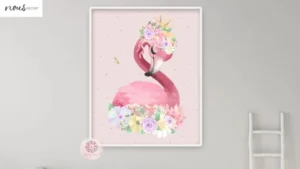Decorating your home can be daunting, but the right Plaster Wall Hanging Hooks make displaying your favorite items easy. After years of experimenting with different hooks at Nousdecor, I’ve nailed down the key factors for selecting ones that work. Read on for my pro tips on finding hooks that won’t let you down.
Key Takeaways
- Plaster wall hooks need to be durable and strong to hold heavier items like mirrors or paintings. Look for ones made of high-quality metals like steel or zinc.
- The design of the hook matters too – curved hooks tend to grip better on plaster walls than straight or angular ones.
- Size and length are other important considerations. Measure your item’s hanging hardware and get a hook at least 0.5 inches longer for a secure hold.
- For heavy items, choose anchor hooks that screw into wall studs or use toggle bolt anchors for extra strength in just plaster.
- Finally, match hook finishes to your wall color and decor style. Satin nickel and black hooks blend in while polished brass and copper add a pop.

Evaluate Your Plaster Wall Hanging Hooks and Wall Material
The first step is to survey what you want to hang and assess your wall’s construction.
Will you be hanging lightweight paintings and photos? Medium-weight mirrors or signs? Or heavy decorative plates and wood carvings? The weight of the items determines the holding strength you need in a hook.
Examine your walls, too. Plaster walls have an outer gypsum and lime layer over brick or wood lathing. They require anchors with gripping power since you can’t screw into the substrate.
Drywall has thicker paper-and-gypsum layers but you can still use toggles or anchors safely. With wood walls, use screw-in eye hooks attached to studs or blocking.
Matching your hooks to the wall type and weight load is key for staying power.
Seek Out Sturdy Hook Materials
For plaster and drywall, look for hooks made of strong metals that won’t bend or break under stress:
- Steel is very strong but prone to rusting without a protective finish. Stainless steel is best for longevity.
- Brass hooks are corrosion-resistant brass alloys. Polished brass gives a classic decorative look.
- Zinc has high strength. Zinc alloy hooks resist rusting.
- Aluminum is budget-friendly but more flexible. Go for thicker hooks rated for heavier loads.
Plastic anchors won’t have the same strength over time. Spending slightly more on metal will pay dividends in reliability.
Select the Optimal Hook Shape
The shape of the hook arm affects how well it grasps your wall. These options provide the most secure hold in plaster and drywall:
- Curved hooks have rounded arms that cradle hung items. The curve grips better without sliding.
- J-hooks have a rounded arm with a short 90-degree bend. The hook won’t wiggle as easily side-to-side.
- Box hooks enclose the item’s hanging wire or hardware. This prevents sliding off.
I avoid straight or angular hooks – they don’t have as much friction to prevent sliding on smooth surfaces.

Ensure the Correct Size
Measuring the size of both your hook and the hanging hardware is a must. Follow these tips:
- Measure your item’s hanging wire, chain, or bracket. Add at least 0.5 inches to this length when choosing a hook. This prevents slippage.
- For heavy mirrors or pictures, add 1 to 2 inches to the hanging hardware length as added security. Oversized is better.
- Box hooks should enclose the hanging wire with minimal extra room. A tight fit prevents swaying.
- The hook opening should also match the gauge of the hanging hardware. Test that it easily slips over the wire or chain.
Taking measurements upfront prevents disappointing sagging or swings later on.
Select the Best Fastener Type
Plaster and drywall hooks come with different fastener types depending on the weight capacity:
- Self-drilling anchors screw directly into walls. They work for lightweight items under 5 pounds.
- Hollow wall anchors expand inside the wall for medium loads up to 15 pounds.
- Toggle bolts collapse to fit through a drilled hole and then expand. They can hold over 50 pounds.
- Screw eyes fasten into wall studs or blocking. Use it for heavy items if you can hit wood.
I use self-drilling plastic anchors for most applications. But heavy or valuable items get toggle bolts for my peace of mind.
Matching fastener strength to load weight prevents ripped-out holes or collapsed plaster.
Consider Hook Finishes
Finish and color are the final selection factors – choose what complements your room decor:
- Satin nickel or black has a modern brushed look and fits any color scheme. They blend into the background.
- Polished brass is classic and decorative. It stands out against white or light walls.
- Oil-rubbed bronze has an antiqued dark stain. It fits with vintage, rustic, or farmhouse decor.
- Bright metals like chrome, copper, or polished brass add a fun pop of color.
I usually opt for satin nickel or black hooks for a clean, minimalist look. But in some rooms, the brass or bronze finishes give that extra design punch I want.
Don’t overlook the importance of finishing. It makes your hooks either stand out or disappear.
Hanging Items Securely on Plaster Walls
Now that you know how to select the right plaster wall hooks, here are my steps for installation:
- Determine your hang point and use a level to mark a line. Hold your item in place if you can.
- Use a stud finder to check for wood studs. If possible, anchor into studs for heavy items.
- Drill pilot holes in your marked spots. Make them slightly smaller than the anchor diameter.
- Insert the wall anchor and tap flush with a hammer if needed. Screw in the hook tightly.
- For toggle bolts, drill the hole, insert the bolt, and turn the wing nut to expand it. Then slide on the hook and tighten.
- Carefully hang your item, keeping the wire taut. Double-check for level. Adjust if needed.
Follow these steps and you’ll have peace of mind your items will hang straight, level, and secure. No more wondering if they’ll crash down overnight!
Proper selection and installation prevent the headache and damage of fallen artwork or decorative plates. My years of experience have taught me these plaster wall hook tips and tricks.

Frequently Asked Questions
Conclusion
Finding sturdy, reliable plaster wall art decor hooks is key to safely displaying your favorite home items without constantly needing repairs.
With my years of experience, I, Mark Cutler, have discovered which hook qualities and installation methods work best. The right materials, shapes, sizes, finishes, and anchors make all the difference in long-lasting strength. Use my advice to select hooks tailored for your own wall and hanging needs.
Soon you’ll create a home decorated with secure and level art, mirrors, photos, and functional items – hooked in style.
And if you’re interested in more plaster wall guides, check out our articles on plaster wall art history, crafting plaster wall art guide, gold-themed plaster decor ideas, and best paints for painting interior plaster walls.






